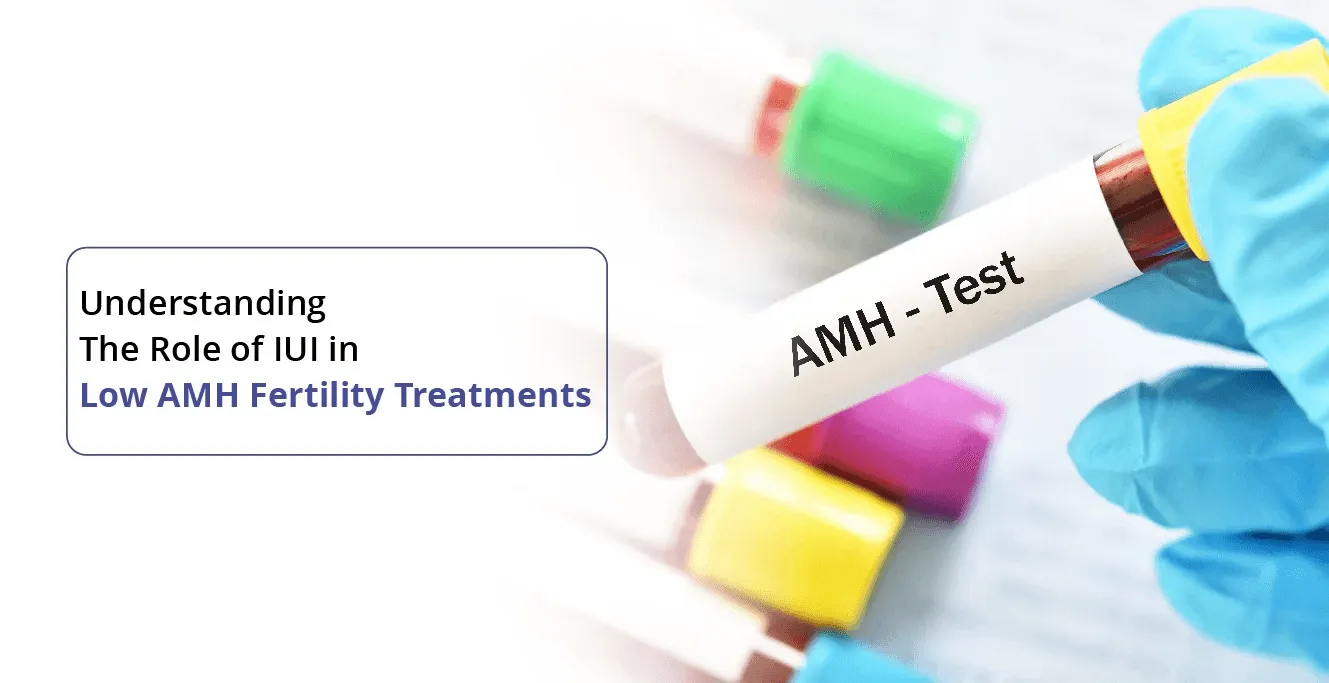
How Much Does AMH Vary in Normal Females?

Table of Contents
Understanding fertility can sometimes seem like navigating a maze. AMH, or anti-Mullerian hormone, is one such factor that plays a crucial role. It offers key information about a woman’s ovarian reserve, or in simpler terms, the number of eggs she has left. But how much does AMH vary in a normal female? Is there a standard range we can refer to?
It’s normal to have these questions – after all, the path to parenthood can sometimes be laden with jargon and medical terminology, which may not always be easy to comprehend.
In this blog post, we delve into understanding the variations in AMH levels amongst women – providing you with the knowledge you need to make informed decisions about your fertility. So, let’s take the first step together towards understanding your fertility better.
Understanding AMH Levels: The Connection to Female Fertility
AMH is a protein hormone produced by cells in the ovaries. It serves as a crucial indicator of a woman’s ovarian reserve, which refers to the quantity and quality of her remaining eggs. Essentially, AMH levels offer insights into a woman’s reproductive potential and fertility status.
Measuring AMH levels is a common practice in fertility clinics and reproductive medicine. A higher AMH level typically indicates a larger ovarian reserve, suggesting a higher likelihood of successful fertility treatments like in vitro fertilisation (IVF). Conversely, a lower AMH level may indicate a diminished ovarian reserve, which could impact a woman’s ability to conceive naturally or through assisted reproductive technologies.
AMH testing is valuable for both assessing fertility potential and guiding treatment strategies. For example, it can help predict how a woman may respond to ovarian stimulation during IVF treatment. Additionally, AMH levels can provide valuable information for women considering fertility preservation or those seeking to understand their reproductive health.
|
Did You Know? Did you know that researchers are exploring the potential of using AMH levels as a biomarker for assessing ovarian health in non-human species? In veterinary medicine, measuring AMH levels in animals such as elephants, rhinoceroses, and pandas could provide valuable insights into reproductive health, breeding success, and population management efforts. This innovative application of AMH testing showcases its versatility beyond human fertility assessment, contributing to conservation efforts and wildlife management worldwide. |
The Science Behind AMH Testing
Testing for AMH levels usually involves a simple blood test. A healthcare professional takes a blood sample from the individual’s arm, and this sample is then sent off to a laboratory for analysis. The lab then measures the amount of AMH present in the blood sample in nanograms per millilitre (ng/mL).
One significant advantage of AMH testing is its flexibility; the test can be done at any point during the menstrual cycle, as unlike other hormones, AMH levels do not fluctuate significantly throughout the month. This convenience eliminates the need for scheduling specific cycle days for testing.
However, it’s crucial to remember that while AMH tests can provide essential insights into a woman’s ovarian reserve, they don’t predict fertility outcomes directly or indicate when menopause will occur.
Factors Influencing AMH Levels in Women
AMH levels in normal females can vary due to several factors, including age, ethnicity, lifestyle choices, and hormonal influences. Here’s how each factor comes into play:
Age
A woman’s age significantly impacts her AMH levels. As women age, their number of eggs decreases naturally, leading to lower AMH levels. The decrease in AMH levels begins about five years before menopause, thus serving as a marker for ovarian ageing.
Ethnicity
Studies have shown variations in AMH levels among different ethnicities. For instance, Hispanic and black women tend to have lower AMH levels compared to Caucasians of the same age.
Body Mass Index (BMI)
Higher BMI can negatively impact AMH levels due to altered hormone metabolism in obese individuals. There’s an inverse relationship between BMI and AMH levels.
Lifestyle Factors
Lifestyle choices such as smoking and stress can also affect AMH levels. Smoking has been linked to lower AMH levels, poorer egg quality, and decreased follicular count. High stress can also lead to lower AMH levels.
Hormonal Influences
Oral contraceptive pill use, pregnancy, and ovarian surgery can all influence AMH levels. Prolonged use of oral contraceptive pills can decrease ovarian reserve, while pregnancy can cause a decline in AMH levels.
|
Myth: Low AMH levels mean infertility and inability to conceive. Fact: Low AMH levels may indicate a diminished ovarian reserve, but they don’t necessarily mean infertility. Many women with low AMH levels can still conceive, although they may face challenges or require fertility treatments. It’s essential to consult with a healthcare provider for personalized fertility assessment and guidance. |
Understanding AMH levels can equip you with important information about your fertility status. It’s advisable to discuss your AMH test results with your doctor or a fertility specialist who can provide you with personalised guidance based on your individual circumstances.
At Birla Fertility, we are dedicated to fully understanding your fertility situation and guiding you through the journey with compassion and expertise. If you’re considering fertility preservation or seeking advice on fertility treatments, don’t hesitate to schedule a consultation with our expert team today.
FAQs
1. Can AMH levels predict the exact number of remaining eggs?
While AMH levels can provide insight into ovarian reserve, they cannot precisely predict the exact number of remaining eggs. AMH serves as a marker of ovarian reserve, indicating the quantity but not the quality of eggs.
2. Do medical conditions or medications affect AMH levels?
Certain medical conditions such as polycystic ovary syndrome (PCOS) and endometriosis, as well as certain medications like hormonal contraceptives, can affect AMH levels. It’s important to inform healthcare providers about any medical conditions or medications that may influence AMH levels for accurate interpretation.
3. Is there a specific AMH level that guarantees fertility?
No, there is no specific AMH level that guarantees fertility, as fertility is influenced by various factors beyond AMH alone. While higher AMH levels may suggest a larger ovarian reserve and potentially better fertility outcomes, other factors such as egg quality and overall reproductive health also play significant roles.
4. Do fertility treatments or ovarian surgeries affect AMH levels?
Fertility treatments such as ovarian stimulation for IVF or ovarian surgeries may temporarily impact AMH levels. However, these changes are typically transient, and AMH levels often return to baseline over time.
5. Are AMH levels different in women who have had children compared to those who haven’t?
There is no significant difference in AMH levels between women who have had children and those who haven’t. AMH levels primarily reflect ovarian reserve and are not directly influenced by previous childbirth.
6. Can AMH levels be used to determine the likelihood of natural conception?
While AMH levels can provide insight into ovarian reserve, they do not directly predict the likelihood of natural conception. Other factors such as menstrual regularity, hormone levels, and reproductive health history also influence fertility outcomes.
Our Fertility Specialists
Related Blogs
To know more
Birla Fertility & IVF aims at transforming the future of fertility globally, through outstanding clinical outcomes, research, innovation and compassionate care.
Had an IVF Failure?
Talk to our fertility experts

 Our Centers
Our Centers










